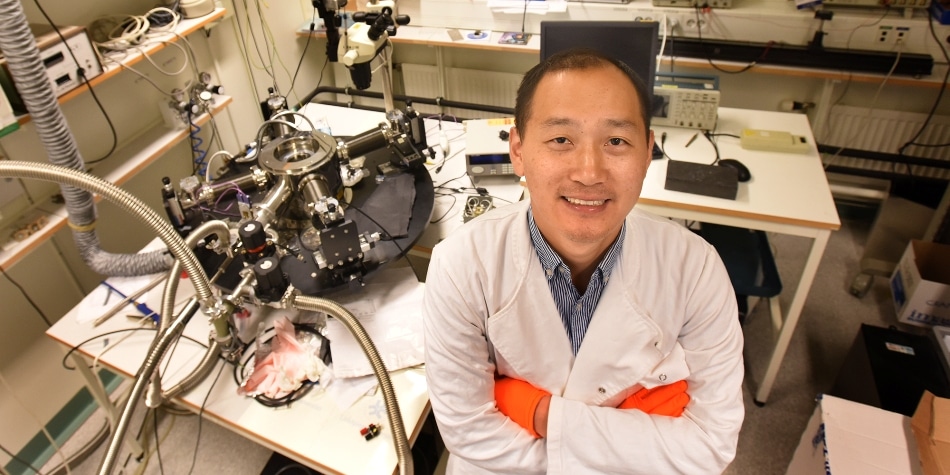Oct 7 2016
 Feng Gao 2016 Credit: Linköping University
Feng Gao 2016 Credit: Linköping University
Organic solar cells with faster charge separation and extensively lower driving force than earlier cells have been developed by Linköping University researchers in collaboration with Chinese and American colleagues. The results have been featured in Nature Energy.
It has been assumed that efficient functioning of organic solar cells requires a huge driving force, which limits the competence of organic solar cells. Recently, a research team headed by Feng Gao, lecturer at IFM at LiU, He Yan at the Hong Kong University of Science and Technology, and Kenan Gundogdu at the North Carolina State University have produced efficient organic solar cells with extremely low driving force.
This explains the fact that the intrinsic restrictions of organic solar cells are no better than those of various other technologies, shifting them a step nearer to commercialization.
Instead of free carriers, strongly bound excitons are generated when organic semiconductors absorb the photons given out by the sun. The driving force here is a measure of the energy that helps dividing the excitons into free carriers.
The driving force ends up in the loss of the photovoltage, which is a vital parameter for the solar cell. Higher photovoltage is obtained based on the lower levels of the driving force.
Efficient organic solar cells traditionally comprise of carbon balls called ‘fullerene’ and semiconducting polymers. In this situation, a greater driving force of more than 0.3 eV is generally required for charge generation to take place in an efficient manner.
In this study, the researchers used a semiconducting small molecule instead of fullerene, and they discovered that a low driving force is essential for efficient working of the devices. Additionally, organic solar cells based on polymer: tiny molecule combinations are extremely stable, as illustrated in another study headed by Feng Gao and his colleagues in Beijing, published in Advanced Materials.
We have developed a system with a huge potential to increase the power conversion efficiency in organic solar cells.
Feng Gao, Lecturer, Linköping University
The article features a description of solar cells with an energy efficiency of 9.5%, which explains that 9.5% of the energy in the sunlight is transformed to electricity. This description was provided by Feng Gao, together with his LiU colleagues, including Professor Olle Inganäs, Professor Fengling Zhang, postdoc Jonas Bergqvist and PhD student Deping Qian.
The results have been featured in Nature Energy under the title ‘Fast charge separation in a non-fullerene organic solar cell with a small driving force’. Researchers part of the study include Jing Liu, Shangshang Chen, Deping Qian, Bhoj Gautam, Guofang Yang, Jingbo Zhao, Jonas Bergqvist, Fengling Zhang, Wei Ma, Harald Ade, Olle Inganäs, Kenan Gundogdu, Feng Gao and He Yan.